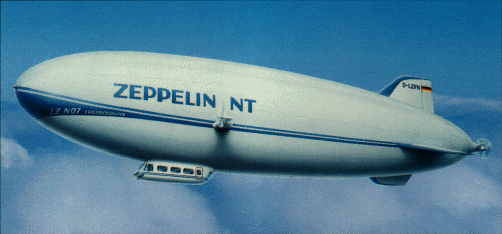

The first human flight occurred in Paris on November 21, 1783, when two passengers made a 25-minute flight in a hot-air balloon designed by Joseph and Etienne Montgolfier. The brothers had been experimenting with balloons for several years. Benjamin Franklin, then serving as ambassador to France, was an official observer of this first manned flight. When asked what was the use of flying he is said to have replied, "What use is a newborn baby?"
A few days after the Montgolfier flight, J. A. C. Charles, in a balloon of his own design, made an ascent with a companion. At the end of the flight his companion got out of the gondola and Charles alone soared to a height of 9000 ft in about ten minutes, making temperature and pressure measurements along the way.
According to Archimedes' principle, a balloon rises if its overall density is less than the density of the air it displaces. Thus a balloon needs very-low-density gas to carry people through the air. Although the Montgolfiers knew about the discovery of hydrogen by Henry Cavendish in 1766, they elected to use hot air, for practical and economic reasons. Professor Charles, with encouragement from Franklin, selected hydrogen instead. (Hydrogen is the least dense of all gases.) For balloons of the same size, a hydrogen-filled balloon has several times more lifting force than a hot-air balloon. The first few years of ballooning were filled with controversy over the relative merits of hydrogen versus hot air, spurring studies of the laws of gas behavior by people who were often associated with ballooning. For instance, the first qualitative work on the thermal expansion of gases was probably done by Charles in about 1787, several years after his first hydrogen balloon flight.
Another balloonist, J. L. Gay-Lussac, was one of the first to make ascents for scientific purposes. He was an active chemist and made two important discoveries about gases. He independently studied the thermal expansion of gases and published his results in 1802, fifteen years after Charles's work. In his paper, Gay-Lussac refered to the earlier work of Charles, noting that Charles had obtained incorrect results for wet gases. The law of thermal expansion of gases is given the names of both Gay-Lussac and Charles.
During the next hundred years, ballooning evolved into sporting, military, and commercial applications, culminating in the invention of the rigid-frame airship by Count Ferdinand von Zeppelin in the last part of the nineteenth century (Fig. 1). Zeppelin's airships became the luxury liners of the sky. The Zeppelin was made of a light, rigid metal framework covered with fabric. Inside were sealed bags of hydrogen gas and compartments for passengers. The cabin that hung beneath the Zeppelin contained the bridge and navigation rooms. The Hindenburg, a Zeppelin built in 1936, was the largest flying machine ever made. It was 803 ft long, 135 ft in diameter, and contained over 7,000,000 ft3 of hydrogen. It had space to carry 72 passengers at 80 mph for over 8000 mi. The Hindenburg made more than 50 successful flights, including 36 across the Atlantic, before it exploded on landing at Lakehurst, New Jersey, in 1937. It was the last of more than 100 Zeppelins built.

Today most ballooning takes place with colorful hot-air sports balloon (Fig. B12.2). From shortly after the time of the Montgolfiers until the 1950s, most balloons used hydrogen or helium, the two lightest gases. The expense of large quantities of these gases effectively kept private individuals from participating. On October 10, 1960, the age of the modern hot-air sports balloon was born when Ed Youst flew a hot-air balloon, using propane burners of his own design. These heat sources, which are at the heart of modern sports ballooning, are capable of delivering several million Btu per hour (10 million Btu/h = 2.9 MW), giving temperatures near 100°C inside the top of a rising balloon. Hot-air balloons must be relatively large because even very hot air is only slightly less dense than the atmosphere. A typical three- or four-person balloon has a volume of about 2200 m3.